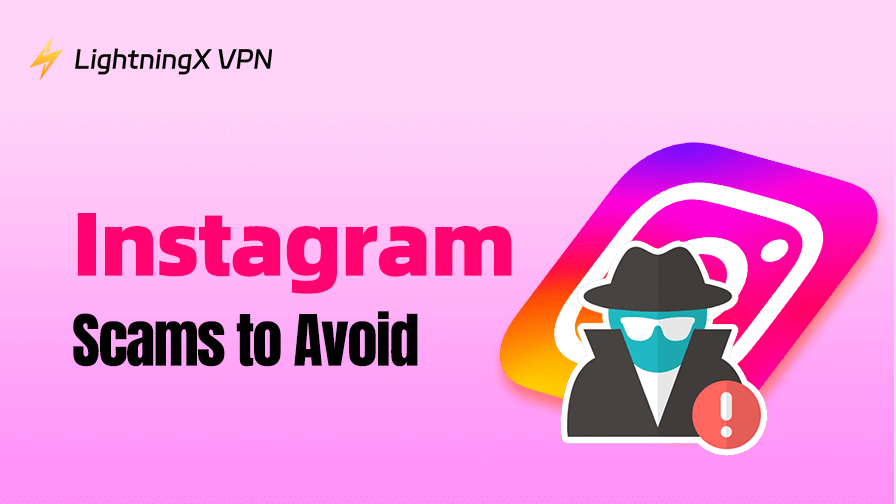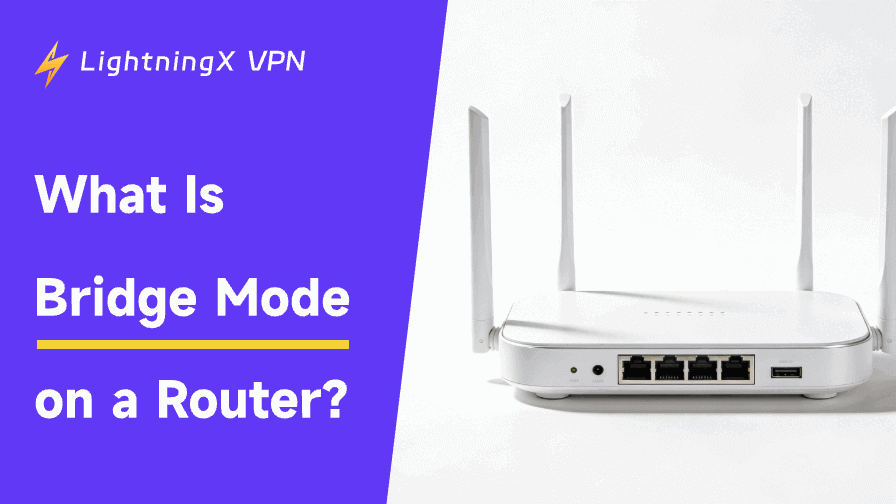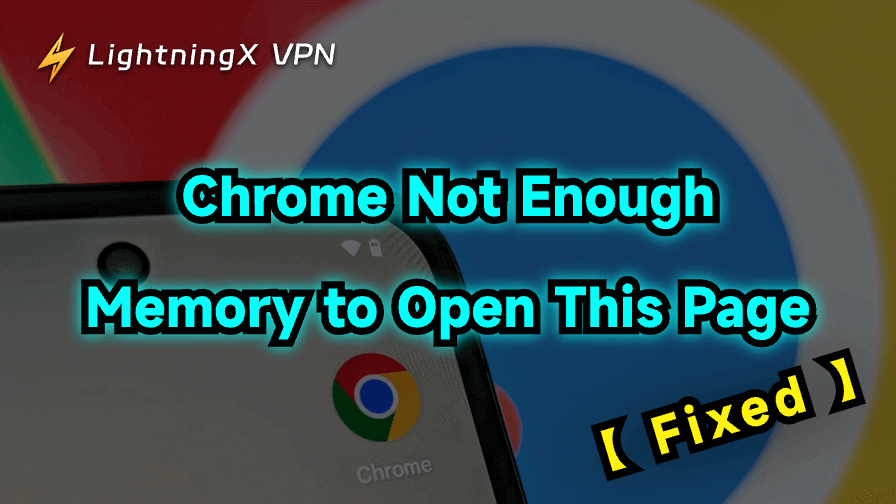According to the Federal Trade Commission (FTC), American consumers lost over $12.5 billion to scams in 2024, a 25% increase from the previous year. Even more concerning, 70% of these scams originate from social media platforms like Instagram.
This means Instagram scams are not only becoming more common but also increasingly costly. Don’t worry! This guide will help you understand the 7 common types of Instagram scams, how to identify them, and what to do if you’ve been scammed.
Phishing Instagram Scams
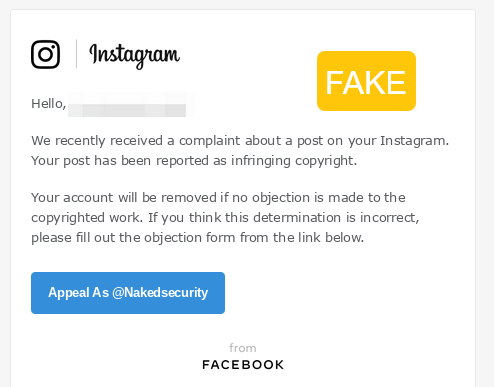
Phishing scams are one of the most common tricks you’ll see on Instagram. They usually start with an urgent message. It might look like it’s from Instagram itself, a brand, or even one of your friends.
The message always includes a link. Once you click it, you’re taken to a fake website that looks just like Instagram. If you type in your username and password, the scammer has your account.
Here’s a real example: a blogger in the U.S. once got an email that looked exactly like an Instagram security alert. She clicked the link, entered her password, and within minutes, her account was hacked.
Common Types of Instagram Phishing Scams
- Fake customer support: Someone pretending to be Instagram support DMs you, claiming there’s an issue with your account. They’ll ask for your login info or even your ID.
- Suspicious email links: You receive an email that appears official, but the sender’s address is slightly off, such as support.instagram.info instead of instagram.com.
- Giveaway phishing: You’re told you “won a prize,” but you have to log in through a link first.
- Friend hijacking: A friend’s account gets hacked, and now they send you a link saying, “OMG, check this out.” If you click it, you could also get hacked.
Impersonation Instagram Scams
Impersonation scams are another major problem on Instagram. In this type of scam, someone creates a fake account that looks almost identical to a real person, brand, or influencer. They often copy profile pictures, bios, and even post similar content. At first glance, it can be difficult to tell the difference.
Here’s a real example: A British student said someone created an account impersonating her favorite fitness influencer. The fake account messaged her, offering “exclusive workouts” for a small fee. After paying, she discovered the account was fake.
Common Types of Instagram Impersonation Scams
- Influencer Accounts Impersonation: Scammers copy well-known influencer accounts and contact their followers, often promoting fake giveaways, brand offers, or soliciting money.
- Friend Impersonation: Scammers clone a friend’s profile and message you, asking for help, funds, or even a loan.
- Brand Impersonation: Fake business accounts impersonating real companies often run fake promotions or sell counterfeit products.
Making Money Scams on Instagram
Instagram is rife with money scams, often sounding too good to be true. Scammers promise quick money, high returns, or easy side hustles. They’ll send you direct messages or post flashy ads featuring luxury cars, large sums of cash, or fake “proof” of income.
One American college student received a private message claiming they could “turn” her $200 into $2,000 in a single day. The account even displayed fake screenshots of successful “clients.” She wired the money via PayPal and never received a cent.
Common Instagram Money-Making Scams
- Investment scams: Scammers promise huge returns from cryptocurrency, forex, or stock trading.
- Money Scalping: They ask you to wire a small amount of cash and then “flip” it into a larger sum.
- Fake giveaways: “Win $1,000 today!” All you have to do is pay a small fee or provide your bank information.
Fake Commerce Scams on Instagram
Fake business scams on Instagram are common, especially since shopping sites have become so popular. Scammers create fake accounts that look like real online stores, complete with product photos, discounts, and even fake reviews.
They lure you in with seemingly enticing offers. After paying, you either never receive the product or receive something completely different and worthless.
Common Types of Instagram Fake Business Scams
- Fake online stores: Entire accounts are set up to sell clothing, electronics, or beauty products that don’t exist.
- Counterfeit goods: Sellers claim to offer “authentic” branded goods at a steep discount, but you end up buying cheap knockoffs.
- Non-delivery scams: After paying, the product never arrives, and your account is subsequently blocked.
- Subscription scams: Scammers offer “free trials” of products, but hidden terms lead to expensive, recurring fees.
Romance and Relationship Scams
Romance and relationship scams are among the most common scams on Instagram. Scammers create profiles with fake photos, often depicting attractive men, beautiful women, or even entrepreneurs.
They’ll chat with you daily to build your trust. Once they feel you’ve taken the bait, they’ll start asking for money or gifts. You might willingly pay out of pride or out of feelings for the person.
This isn’t just happening on Instagram. Many WhatsApp scams follow the same pattern, with scammers spending weeks building an emotional connection before demanding money.
Here’s a real example: A man thought he was chatting with a nurse working overseas. After a few weeks of chatting, she told him her salary was late and she needed money for rent. He wired her $500 and asked for more. Eventually, he discovered his contact information had been blocked.
Fake Job Opportunities
Fake opportunity scams prey on people’s hopes and aspirations. Scammers pretend to offer amazing job opportunities.
These opportunities may sound enticing and legitimate, but they often require upfront fees, personal information, and even intimate photos for verification purposes.
Common Fake Opportunity Scams
- Fake modeling or acting offers: Scammers impersonating agencies ask for an upfront payment for a “portfolio review” or “application fee.”
- Brand Ambassador Scams: Impersonating brands promise free products or payments, but require you to purchase the merchandise first.
- High-Paying Job Scams: Jobs that appear too good to be true and offer high salaries require a deposit or personal information.
Blackmail Instagram Scams
Blackmail scams are among the most dreaded scams on Instagram. They typically begin by scammers tricking you into sharing personal photos, videos, or private information.
Once they have the sensitive information, they threaten to release it publicly or send it to friends and family unless you pay them.
Common Types of Blackmail Scams
- Private Information Extortion: Scammers force victims to share intimate photos or videos, then use them to blackmail them.
- Account Hack Threats: Scammers claim they’ve hacked into your account and will release your private data unless you pay them.
- Reputation Threats: Scammers claim they’ll ruin your online reputation unless you pay them.
What are Common Instagram Scammer Phrases?
Scammers often use certain phrases to grab your attention and get you to act quickly. Familiarizing yourself with these phrases can help you spot Instagram scams.
- “You’ve won!” or “Claim your prize now!”
- “Limited-time offer, grab it now!”
- “We saw your profile and want to collaborate.”
- “Please send me money for shipping/taxes.”
- “I need help, please send money.”
- “Click this link to verify your account.”
Scammers use emotion, urgency, and flattery to trick you into taking action without thinking. If a message feels aggressive, too good to be true, or just plain weird, it’s usually a red flag.
What Should You Do If You Have Already Encountered Instagram Scams?
If you’ve been scammed by an Instagram scam, take quick action by following the steps below:
Step 1: Secure Your Account
Immediately change your Instagram password and enable two-factor authentication. If the scam involves someone gaining access to your personal information, consider notifying your bank or payment provider to prevent unauthorized charges.
Step 2: Report the scam on Instagram
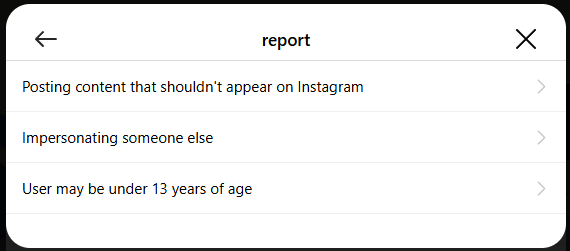
Go to the conversation. Click “More information” in the top right. Click “Report”. Select a reason for why you’re reporting the message, then follow the on-screen instructions. Finally, Click “Submit Report”.
Step 3: Contact Your Payment Provider
If your money has been taken, contact your payment provider, such as PayPal, Venmo, or your bank, to see if the transaction can be reversed or marked as fraudulent.
Read more: Is PayPal Safe to Use? Here’s What You Need to Know
Step 4: Document Everything
Take screenshots of chats, emails, and any interactions. This evidence will be very helpful if you need to report the scam to the police.
Scammers often target multiple people at once, so acting quickly not only protects you but also prevents them from defrauding others.
How to Avoid Instagram Scams?
Instagram scams are so insidious because they often look incredibly convincing. Here are some tips to avoid Instagram scams before they cause you trouble:
1. Check the account: When someone contacts you on Instagram, look for the blue verification badge and check the follower count, post engagement, and how long the account has been active.
2. Don’t click on suspicious links: Avoid links in direct messages or emails that ask for your password, bank details, or personal information.
3. Be wary of offers and money-making scams: Any offers from brands that promise quick cash, free gifts, or require an upfront payment are almost certainly scams.
4. Use antivirus software and a VPN: Antivirus programs help detect malware or suspicious files, while a VPN keeps your connection secure and protects your data when using public Wi-Fi.
Read more: How to Get Rid of Malware [Beginner-friendly Guide]
To protect your online security, use a VPN like LightningX VPN. It uses advanced encryption protocols to make it harder for Instagram scammers to intercept your data. With over 2,000 servers and unlimited speed and bandwidth, it allows you to browse any social media platform securely.
It supports Android, iOS, Windows, macOS, Linux, and other operating systems, offers free high-speed nodes, and comes with a 30-day money-back guarantee.
5. Use two-factor authentication: Adding two-factor authentication provides additional security for your account. Here’s how to set it up:
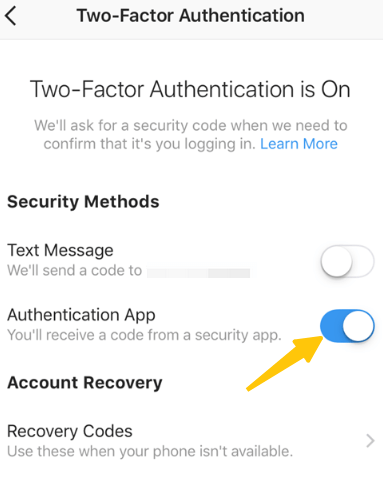
- Open Instagram and go to your profile.
- Tap the three horizontal lines in the top right corner and select “Settings”.
- Go to “Security” > “Two-Factor Authentication”.
- Tap “Get Started” and select your preferred method: SMS Verification or ID Verification.
6. Verify before sending money or messages: If someone asks you for money, sensitive photos, or personal information, stop and seek help from family and friends.
FAQ about Instagram Scams
1. What can an Instagram scammer do with your phone number?
Scammers may use your phone number to hack into your accounts, send spam or phishing emails, or even sell it to other scammers.
2. Why are there so many fake Instagram accounts?
Because fake accounts are easy to create, scammers can profit from them by using them to steal funds, spread phishing links, promote counterfeit products, or trick users into providing personal information.









